London
Top-Rated Tourist Attractions in London
It's little wonder London, England is one of the world's top tourist destinations, attracting upward of 20 million visitors each year from around the world. Britain's capital city is a vibrant arts and entertainment center (its theaters are always busy), and 50 years after The Beatles, the country's music scene still rocks.
London also offers one of the planet's greatest concentrations of cultural attractions. From royal palaces to the people's parliament, from museums and cathedrals to riding a giant Ferris wheel for breathtaking views over the River Thames, you could spend endless days exploring London's best sightseeing locations without ever running out of unique things to see and do. And, as an added bonus, many of the best places to visit are free.
To help you make the most of your London travel itinerary, be sure to refer often to our list of the top tourist attractions in London.
1. Buckingham Palace and the Changing of the Guard
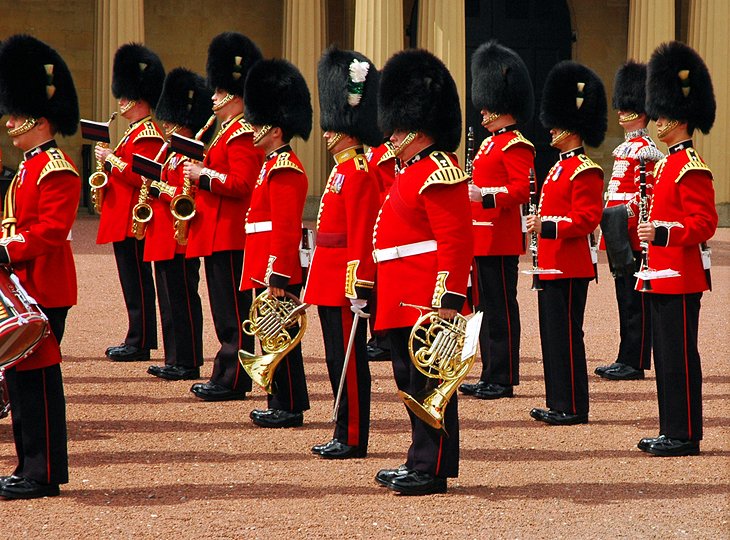
One of Britain's most iconic buildings, Buckingham Palace is also the scene of London's most popular display of pomp and circumstance, the Changing of the Guard. Drawing crowds at 11:30am regardless of the season, this colorful and free display of precision marching and music also takes place at St. James's Palace, after which you can follow the band along The Mall as they march between sites.
Buckingham Palace was built in 1837 and has been the London residence of the Royal Family since Queen Victoria's accession. If you're wondering whether the Queen is in, look at the flagpole atop the building: if the royal standard is flying day and night, she's at home. On special state occasions, she and members of the Royal Family may even emerge on the central balcony.
When the Queen's away at her summer palace in Scotland, visitors can purchase tickets for tours of the State Rooms, the Queen's Gallery, and the Royal Mews.
One of the best ways to tour the palace, see the Changing of the Guard, and experience a traditional afternoon tea, is on a 4.5-hour Buckingham Palace Tour Including Changing of the Guard Ceremony and Afternoon Tea. This tour is a very efficient way of seeing the highlights in a short period of time, and having a knowledgeable guide to explain the history makes the whole experience that much more enjoyable and relevant for first time visitors.
- 2. The Tower of London and Tower Bridge
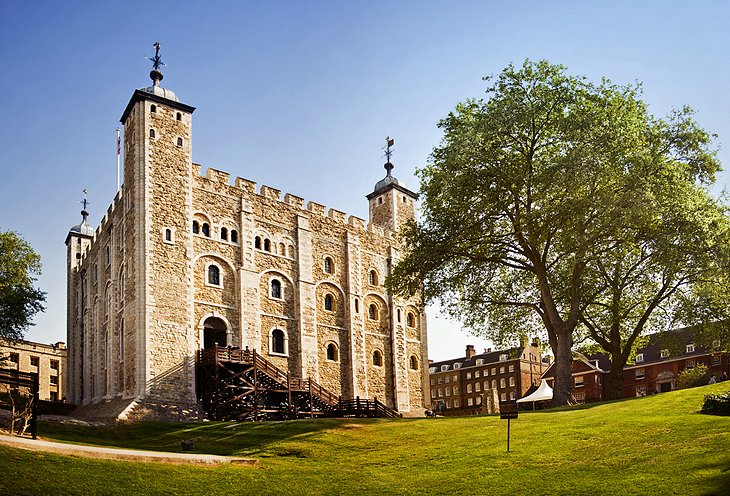
From prison to palace, treasure vault to private zoo, the magnificent Tower of London has fulfilled many different roles down the centuries. One of Britain's most iconic structures, this spectacular World Heritage Site offers hours of fascination for visitors curious about the country's rich history - after all, so much of it happened here. Inside the massive White Tower, built in 1078 by William the Conqueror, is the 17th-century Line of Kings with its remarkable displays of royal armaments and armor.
Other highlights include the famous Crown Jewels exhibition, the Beefeaters, the Royal Mint, and gruesome exhibits about the executions that took place on the grounds. The adjacent Tower Bridge, its two huge towers rising 200 feet above the River Thames, is one of London's best-known landmarks (fascinating behind-the-scenes tours are available).
For the best use of your time, especially during the busy summer season, purchase the Tower of London Entrance Ticket Including Crown Jewels and Beefeater Tour in advance, to bypass the ticket office lines. This ticket guarantees the lowest price, helps avoid the crowds, and saves time and hassle.
- 3. The British Museum
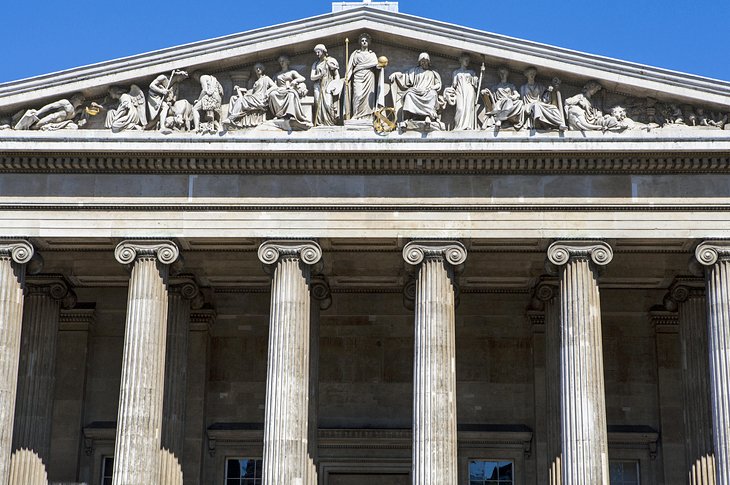
Displaying one of the world's finest collections of antiquities, the British Museum contains more than 13 million artifacts from the ancient world. With priceless objects from Assyria, Babylonia, China, Europe, and elsewhere, it's hard to know where to begin. But most tourists head first for the museum's most famous exhibits: the controversial Elgin Marbles from the Parthenon, the Rosetta Stone, the colossal bust of Ramesses II, the Egyptian mummies, and the spectacular hoard of 4th-century Roman silver known as the Mildenhall Treasure.
In addition to a well-stocked, on-site bookshop boasting an exhaustive array of titles on ancient history, archaeology and art history, there's a shop selling kids' games and souvenirs, along with one that sells replica sculptures and jewelry. For those able to linger longer, the museum offers a variety of lectures and workshops, plus a restaurant and café.
4. Big Ben and Parliament
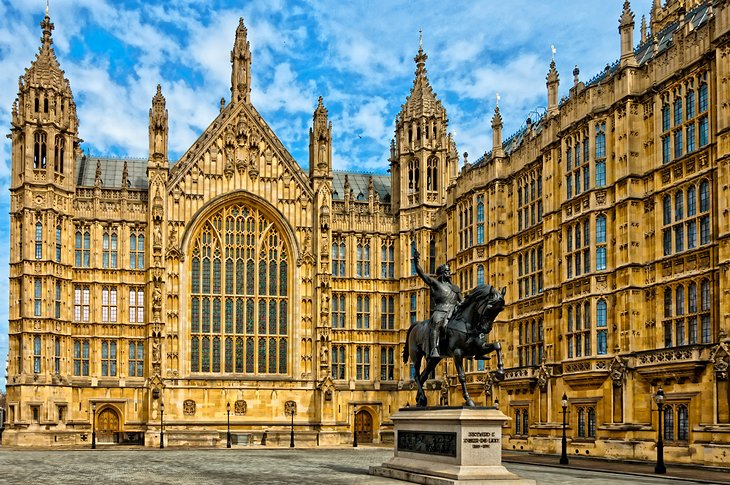
Nothing screams "London" more emphatically than the 318-foot tower housing the giant clock and its resounding bell known as Big Ben. It's as iconic a landmark as Tower Bridge, and the tolling of Big Ben is known throughout the world as the time signal of the BBC. Below it, stretching along the Thames, are the Houses of Parliament, seat of Britain's government for many centuries and once the site of the royal Westminster Palace occupied by William the Conqueror.
Tours of the parliament buildings offer a unique chance to see real-time debates and lively political discussions. From Parliament Square, Whitehall is lined by so many government buildings that its name has become synonymous with the British government.
5. National Gallery
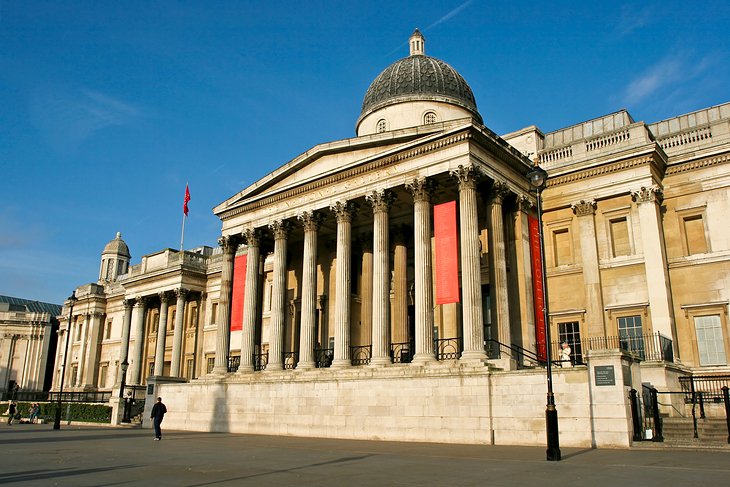
Ranking among the top art museums in the world, London's National Gallery represents an almost complete survey of European painting from 1260 until 1920. The museum's greatest strengths are in its collections of Dutch Masters and Italian Schools of the 15th and 16th centuries. Among its highlights are a cartoon (preliminary sketch) of the Madonna and Child by Leonardo da Vinci, Michelangelo's The Entombment, Botticelli's Venus and Mars, van Gogh's Sunflowers, and The Water-Lily Pond by Monet.
6. The Victoria and Albert Museum
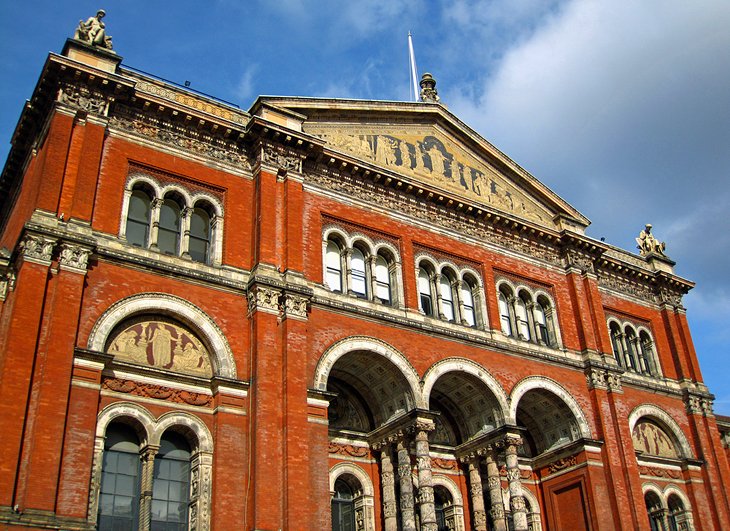
The Victoria and Albert Museum (aka the V&A) is part of a South Kensington-based group of museums that includes the Natural History Museum and Science Museum. Founded in 1852, the V&A covers close to 13 acres and contains 145 galleries spanning some 5,000 years of art and related artifacts.
Exhibits include ceramics and glass, textiles and costumes, silver and jewelry, ironwork, sculpture, prints, and photos, and are conveniently arranged into four main categories: Asia; Furniture, Textiles, and Fashion; Sculpture, Metalwork, Ceramics, and Glass; and Word and Image.
It's impossible to get around this vast museum in a single visit, so the best plan to tackle it is to decide in advance which sections you most want to see. Taking a V&A tour is highly recommended, and often free, with options including everything from daily introductory tours to specific gallery or themed tours.
If you're around, check into one of the fun "Friday Late" programs held on the last Friday of the month, popular for their food and drink experiences, along with late-night exhibition openings.
7. Piccadilly Circus and Trafalgar Square
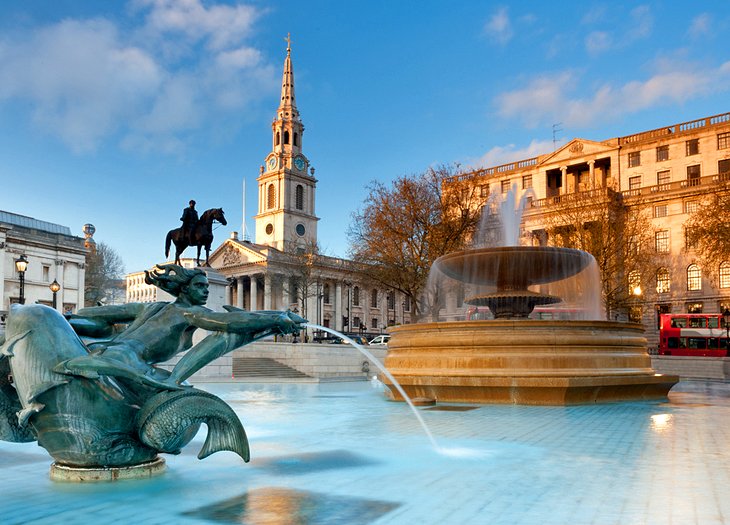
Two of London's best-known tourist spots, Piccadilly Circus and Trafalgar Square lie not far apart and mark the gateways to Soho, London's lively theater and entertainment district. Trafalgar Square was built to commemorate Lord Horatio Nelson's victory over the French and Spanish at Trafalgar in 1805. Nelson's Column, a 183-foot granite monument, overlooks the square's fountains and bronze reliefs, which were cast from French cannons. Admiralty Arch, St. Martin-in-the-Fields, and the National Gallery surround the square.
Piccadilly Circus marks the irregular intersection of several busy streets - Piccadilly, Regent, Haymarket, and Shaftesbury Avenue - and overlooking this somewhat untidy snarl of traffic stands London's best-known sculpture, the winged Eros delicately balanced on one foot, bow poised. "It's like Piccadilly Circus" is a common expression describing a busy and confusing scene.
- 8. The Shard
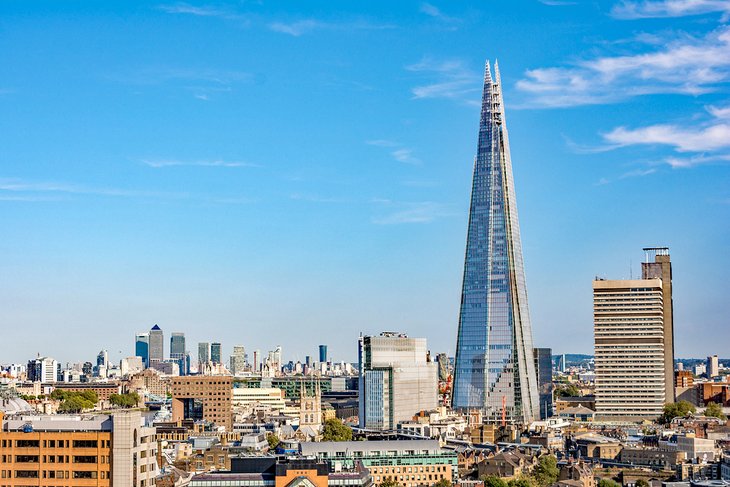
Since it opened in 2012, The Shard has taken its place as one of the most-recognizable and most-visited landmarks in London. Standing 1,016 feet tall and encompassing some 95 stories, this remarkable structure - so-named for its resemblance to a shard of glass - dominates the skyline yet, thanks to its pleasing design, doesn't seem at all out of place when seen next to neighbors such as Tower Bridge.
In addition to its office space on the lower levels, The Shard is home to a stunning Shangri-La Hotel and three superb restaurants, all boasting some of the most incredible views over London. For those not staying here, the upper-most levels consist of a choice of viewing platforms: indoor and outdoor.
9. The Two Tates: Tate Britain and Tate Modern
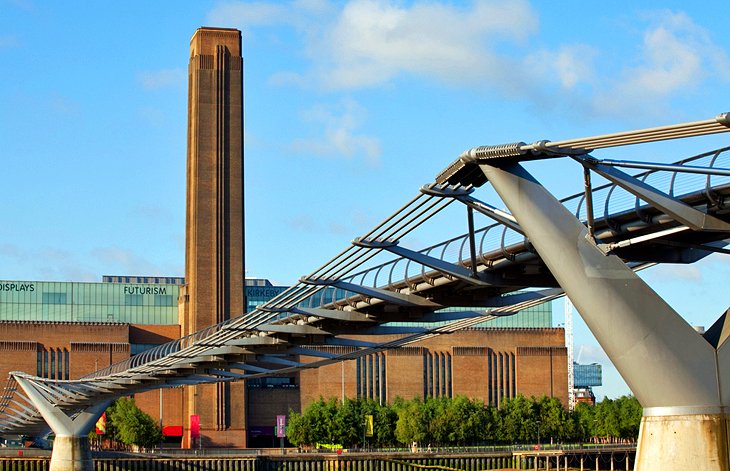
Once collectively known singularly as the Tate Gallery, London now has two Tate art galleries: Tate Britain and Tate Modern. Comprising one of the world's most important art collections, the original gallery opened in 1897 as the basis of a national collection of significant British art, and continued to make acquisitions, needing more space to properly display its collections. The end result was the establishment of Tate Britain, in Millbank on the north side of the Thames, as home to its permanent collection of historic British paintings.
A superbly transformed power station across the Thames became home to the modern art collections. Art lovers can spend a whole day viewing both sites, conveniently connected by high-speed ferry. Better still, walk across the Millennium Bridge, a footbridge that connects the two banks of the river close to the Tate Modern. The views are spectacular.
10. Westminster Abbey
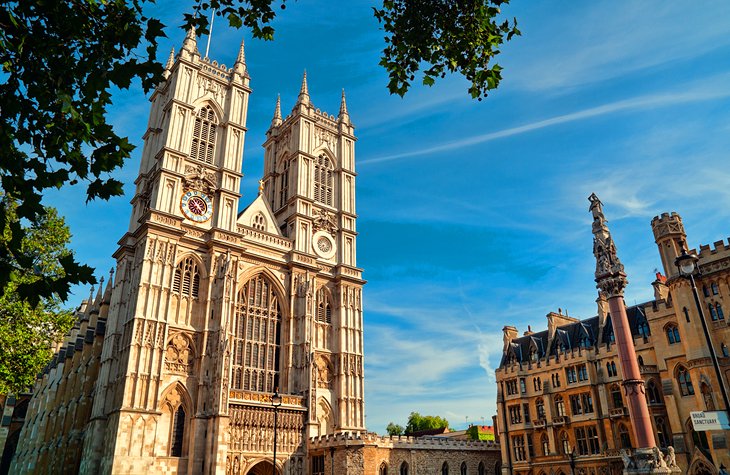
Another location with a long association with British royalty, Westminster Abbey stands on a site that's been associated with Christianity since the early 7th century. Officially known as the Collegiate Church of St. Peter in Westminster, Westminster Abbey was founded by Edward the Confessor in 1065 as his place of interment.
From his burial in 1066 until that of George II almost 700 years later, most sovereigns were not only crowned here but were buried here, too. More recently, it's become famous as the preferred location for Royal Weddings.
This masterpiece of Gothic architecture not only has the highest Gothic nave in England (102 feet), it's also one of London's most popular tourist attractions, drawing well over a million visitors each year. Highlights of a visit include seeing the more than 600 memorials in the Nave, including the Tomb of the Unknown Warrior; Poet's Corner in the Transepts, with its memorials to the likes of Shakespeare, Chaucer, and Dickens; the Westminster Abbey Museum; and the attractive gardens.
11. Churchill's War Rooms
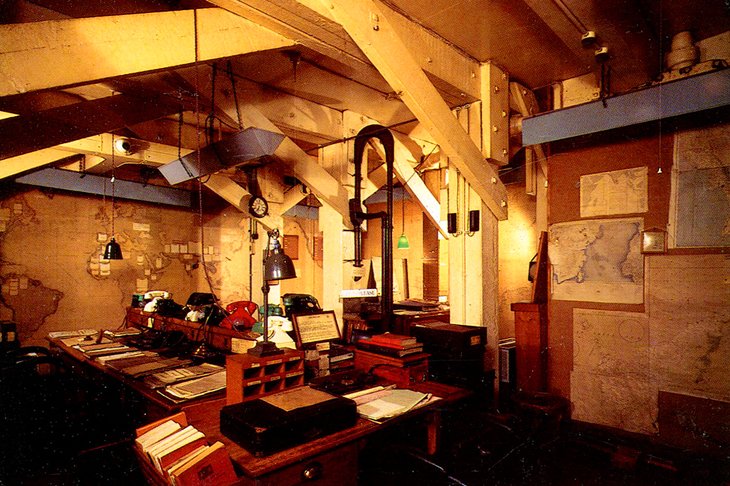
Among the most fascinating and evocative of London's historic sites is the perfectly preserved nerve-center from which Prime Minister Winston Churchill directed the British military campaigns and the defense of his homeland throughout World War II. Their Spartan simplicity and cramped conditions underline the desperate position of England as the Nazi grip tightened across Europe.
You'll see the tiny cubicle where Churchill slept and the improvised radio studio where he broadcast his famous wartime speeches. Simple details, such as Clementine Churchill's knitting wool marking the front lines on a map of Europe, bring the era to life as no other museum could possibly do. Audioguides are available (a thorough self-guided tour takes about 90 minutes), and a café and bookshop are located on the premises.
Two other related London attractions worth visiting are also operated by the Imperial War Museum. Located a short distance from the popular Southbank cultural district, the Imperial War Museum London can easily occupy the best part of a day with its fascinating exhibits and collections of military vehicles, weapons, and aircraft. The other must-see, HMS Belfast, is a well-preserved WWII-era cruiser that served during D-Day and can be explored as part of a guided or self-guided tour.
12. Natural History Museum
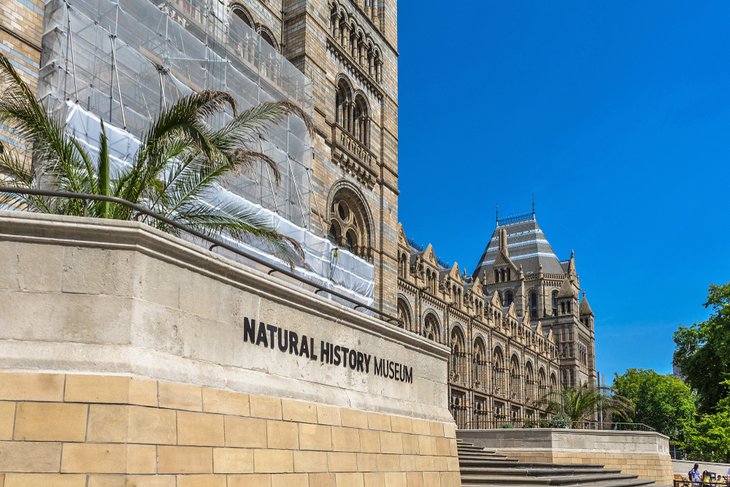
Established in 1754, London's spectacular Natural History Museum remains one of the most-visited such attractions on the planet. It's easy to spot for its huge Romanesque façade, and a visit is something you'll not want to rush. Many of the museum's original exhibits are still on display centuries later, and together comprise a massive collection of more than 80 million items showcasing everything from botany to zoology, plus pretty much everything in between. A highlight of a visit is seeing the preserved specimens that Charles Darwin collected on his epic journeys.
If you're not in a hurry, start your visit by joining one of the formal guided tours on offer, ranging from 30 to 50 minutes. You'll be introduced to highlights you may wish to return to at a later date to explore in greater detail. A variety of fun events are held regularly, from workshops for kids to late night openings. Shopping opportunities are located on-site, along with a number of dining options.
13. Hyde Park
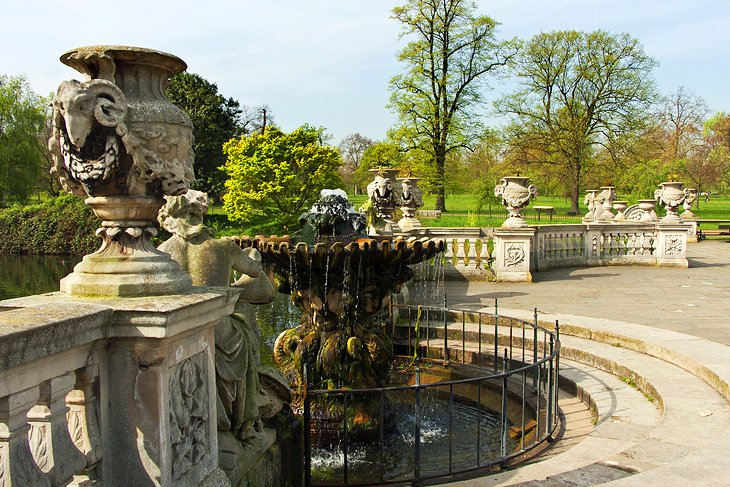
Covering 350 acres, Hyde Park is London's largest open space and has been a destination for sightseers since 1635. One of the park's highlights is the Serpentine, an 18th-century man-made lake popular for boating and swimming. Hyde Park is also where you'll find Speakers' Corner, a traditional forum for free speech - and heckling.
Another Hyde Park landmark is Apsley House, former home of the first Duke of Wellington and purchased after his famous victory at Waterloo. Now a museum, it houses Wellington's magnificent collections of paintings, including Velázquez's The Waterseller of Seville, along with gifts presented by grateful European kings and emperors. England's greatest hero is also commemorated at the Wellington Arch.
Another lovely London green space to explore is Regent's Park. Just a short walk away from Westminster, this 410-acre attraction is a delight to stroll around.
If you're traveling with kids, be sure to visit London Zoo, located within the grounds of the park and one of the most popular things to do for families visiting the city.
- 14. St. Paul's Cathedral
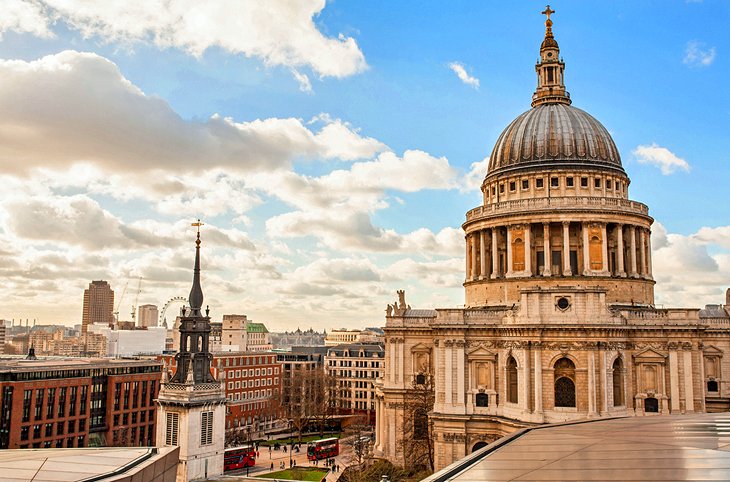
The largest and most famous of London's many churches - and undoubtedly one of the most spectacular cathedral's in the world - St. Paul's Cathedral sits atop the site of a Roman temple. The previous church structure was destroyed in the Great Fire of 1666, and Sir Christopher Wren designed the rebuild. Today, the twin Baroque towers and magnificent 365-foot dome of St. Paul's are a masterpiece of English architecture. If you're up to it, be sure to walk the stairs with their spectacular views of the dome's interior, including the Whispering Gallery - undoubtedly one of the top things to do in London.
- 15. Covent Garden
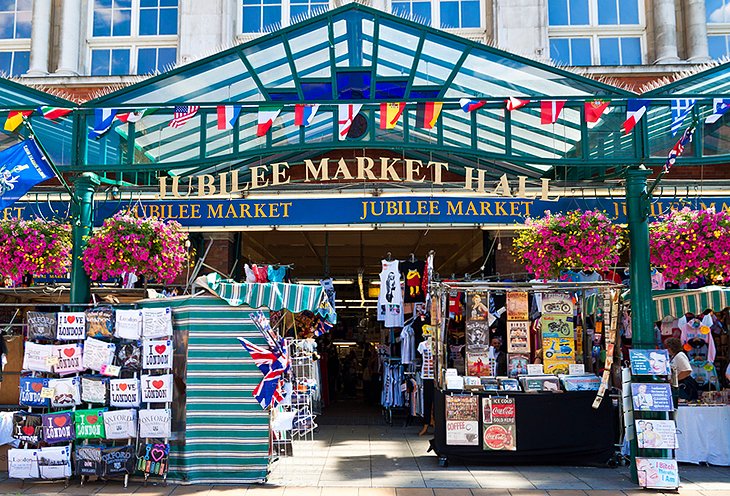
The market halls of Covent Garden are only the beginning of the neighborhood, which encompasses the shops and restaurants of Long Acre and other adjacent streets, those of Neal's Yard and Seven Dials, as well as the Central Square with its street performers. The halls and arcades of Covent Garden Market are lined with specialty shops and kiosks selling everything from fine handcrafts to tacky souvenirs.
Housed in the former flower market, you'll find the London Transport Museum, filled with historic buses, trolleys, and trams. This area is also where you'll find the Royal Opera House.
- 16. The London Eye
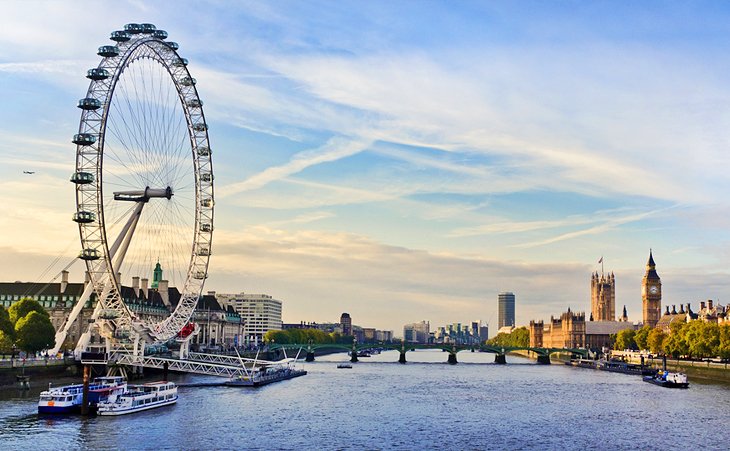
Built to mark London's millennium celebrations in 2000, the London Eye (officially the Coca-Cola London Eye) is Europe's largest observation wheel. Its individual glass capsules offer the most spectacular views of the city as you embark on a circular tour rising 443 feet above the Thames. The journey lasts close to 30 minutes, often quicker than the time spent lining up for your turn. If you can, reserve your time in advance.
The best option is to skip the line completely with a London Eye: Skip-the-Line Ticket. This advance ticket allows you to take a flight at any time on the day you plan to visit. If you can afford it, rent one of the private capsules and share the experience with friends and family!
Another fun way to view London for above is aboard the Emirates Air Line, a cable car system that crosses the Thames between Greenwich and the Royal Victoria Dock. The journey travels 1km and lasts 10-minutes, long enough to enjoy spectacular views and grab a few memoranbe selfies.
17. Hampton Court Palace
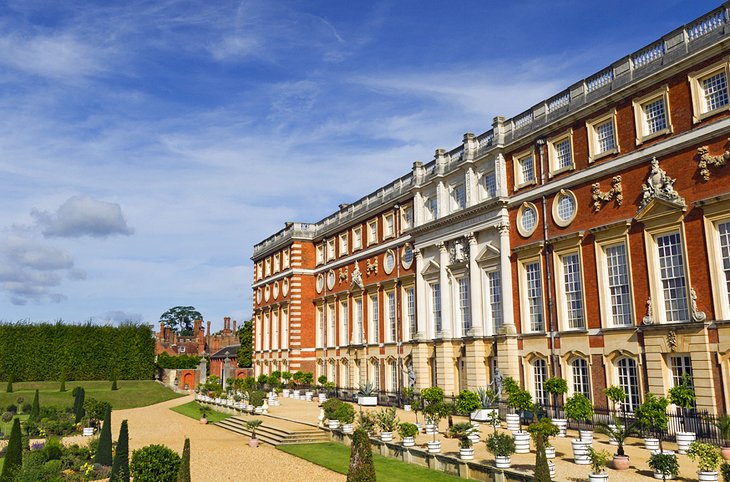
Another great Thames-side attraction, Hampton Court is one of Europe's most famous palaces. Its Great Hall dates from Henry VIII's time (two of his six wives supposedly haunt the palace), and it's where Elizabeth I learned of the defeat of the Spanish Armada.
Other interesting features include the Clock Court with its fascinating astronomical clock dating from 1540, the State Apartments with their Haunted Gallery, the Chapel, the King's Apartments, and the Tudor tennis court.
The gardens are also worth visiting - especially in mid-May when in full bloom - and include the Privy Garden, the Pond Garden, the Elizabethan Knot Garden, the Broad Walk, an area known as the Wilderness, and of course, the palace's famous Maze. Although a little farther outside the city center, Hampton Court is a must-do sightseeing trip when visiting London.
- 18. Greenwich and Docklands
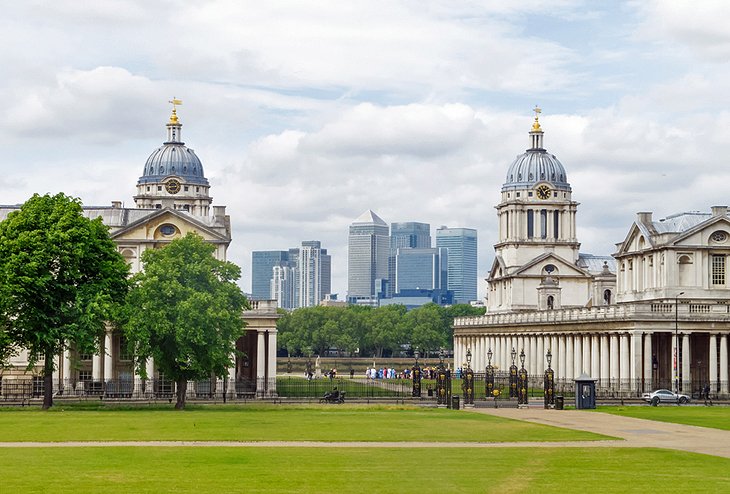
For centuries the hub of Britain's naval power, Greenwich is best known to tourists as the home of the Cutty Sark, the last of the 19th-century tea clippers to sail between Britain and China. The ship is located adjacent to the Discover Greenwich Visitor Centre with its exhibits showcasing more than 500 years of maritime history, and the Palladian mansion known as Queen's House.
The impressive collections of the National Maritime Museum, the largest of its kind in the world, illustrate the history of the Royal Navy. And one of the most unusual things to do in London is standing with one foot in each hemisphere, astride the Meridian Line in the Meridian Building in the Royal Observatory.
The revitalized Docklands across the river has been transformed into an international place of business and recreation, filled with some of London's smartest new restaurants. The excellent Museum of London Docklands, in the old Georgian warehouses, brings to life the river, port, and its people from Roman times to the present through hands-on displays that are especially interesting for children.
- 19. Kew Gardens
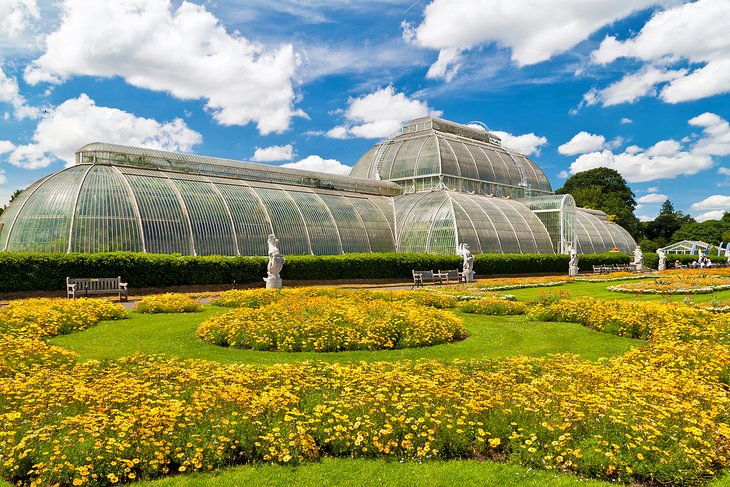
Kew Gardens - officially called the Royal Botanic Gardens - is situated in southwest London on the south bank of the Thames and is a wonderful place to visit as you enjoy the numerous plants grown amid its 300 acres. Laid out in 1759, the gardens became government property in 1841. In 1897, Queen Victoria added Queen's Cottage and the adjoining woodland. A variety of tours are available free with admission, and many musical and cultural events are held here throughout the year.
(thanks to: www.planetware.com)
Comments
Post a Comment